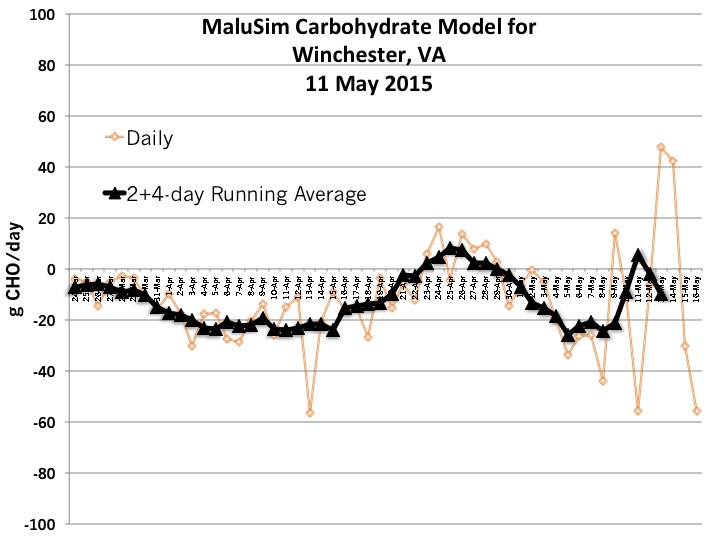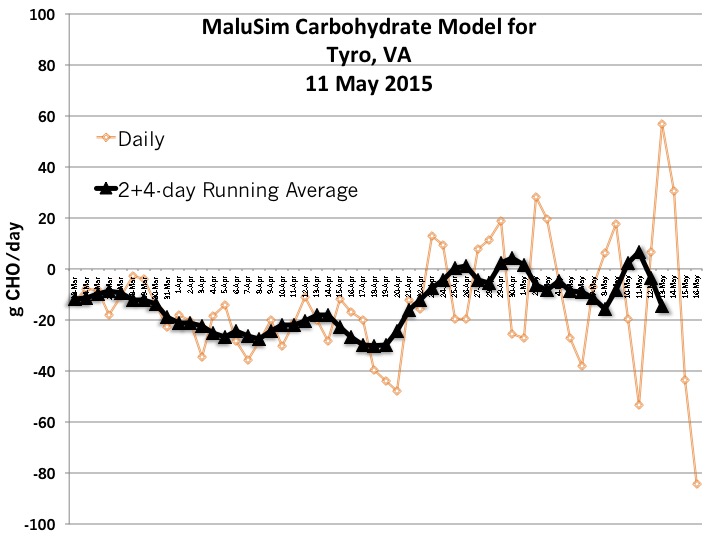For both Winchester and Central Virginia, the Malusim model is predicting a mild to no carbohydrate stress over the next week. Although temperatures at the time of application, are less important then the carbohydrate running average (2+4 Running Average), expect chemical thinners applied Sunday (10 May) or Monday (11 May) to cause more thinning than applications made late last week or for the rest of this week. Expect a “typical” response from chemical thinners applied Tuesday (12 May) through the rest of this coming week.
The National Weather Service is predicting sunny weather later this week, as well as daytime temperatures in the 70s. This should result in ideal conditions for plant growth, and thus less carbohydrate stress in the apple trees.
One of the weaknesses of weather-based models, is the need to use forecast data to make decisions about future events. When I ran the MaluSim models for both Winchester and Central Virginia last Thursday, the forecast was for hot, cloudy weather. Although it was in the mid-80s in most of Virginia over the weekend, there was also a lot more sunlight than predicted. Temperatures are generally a lot more reliable than cloud cover predictions, but both seemed to be less severe than originally forecasted.
Cloudy weather predicted for later in the week is causing wild swings in the MaluSim model output. My expectation is that actual carbohydrate levels will be more moderate and that running average values will remain in the 20 to -20 g CHO/day range.
Full model output:


